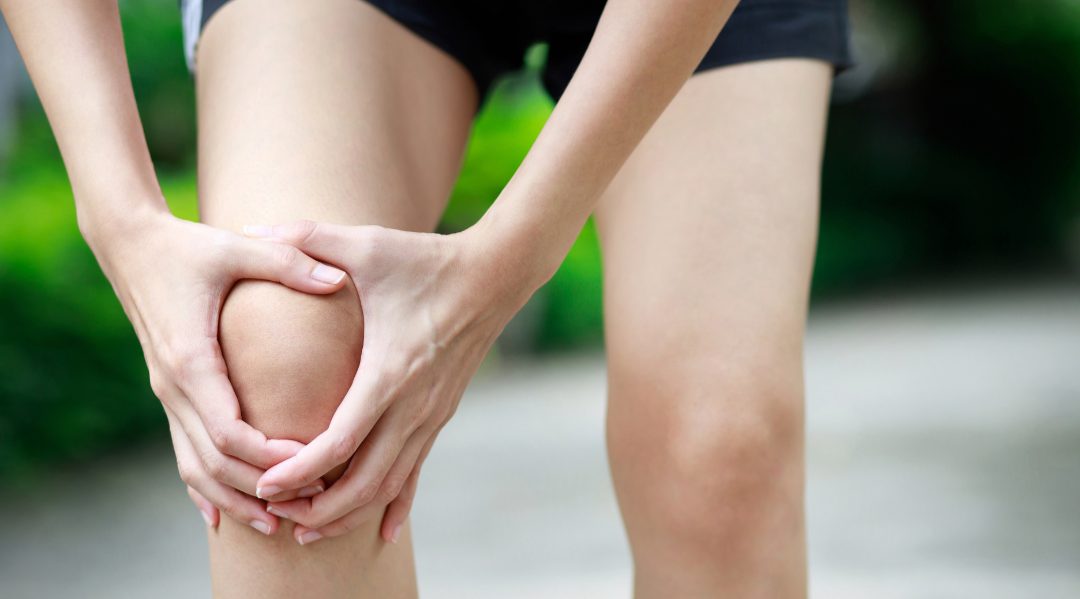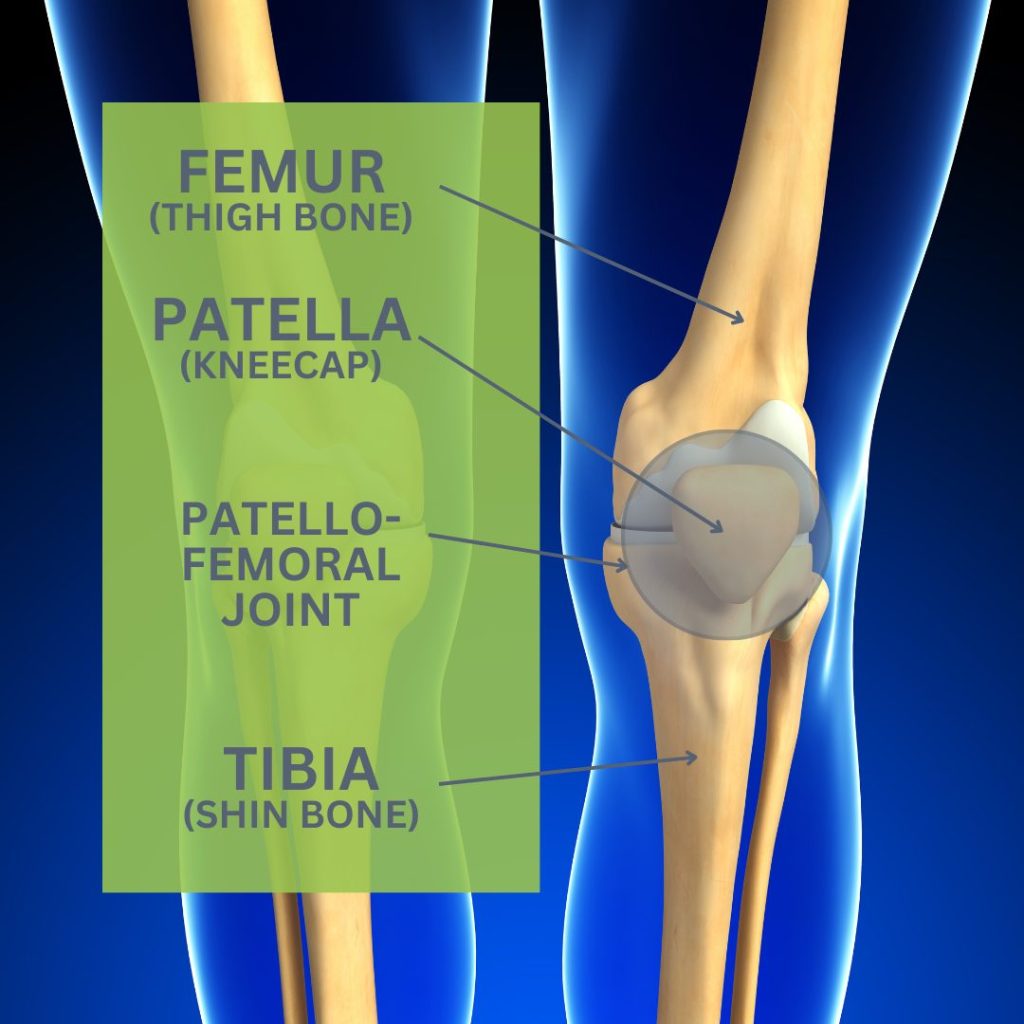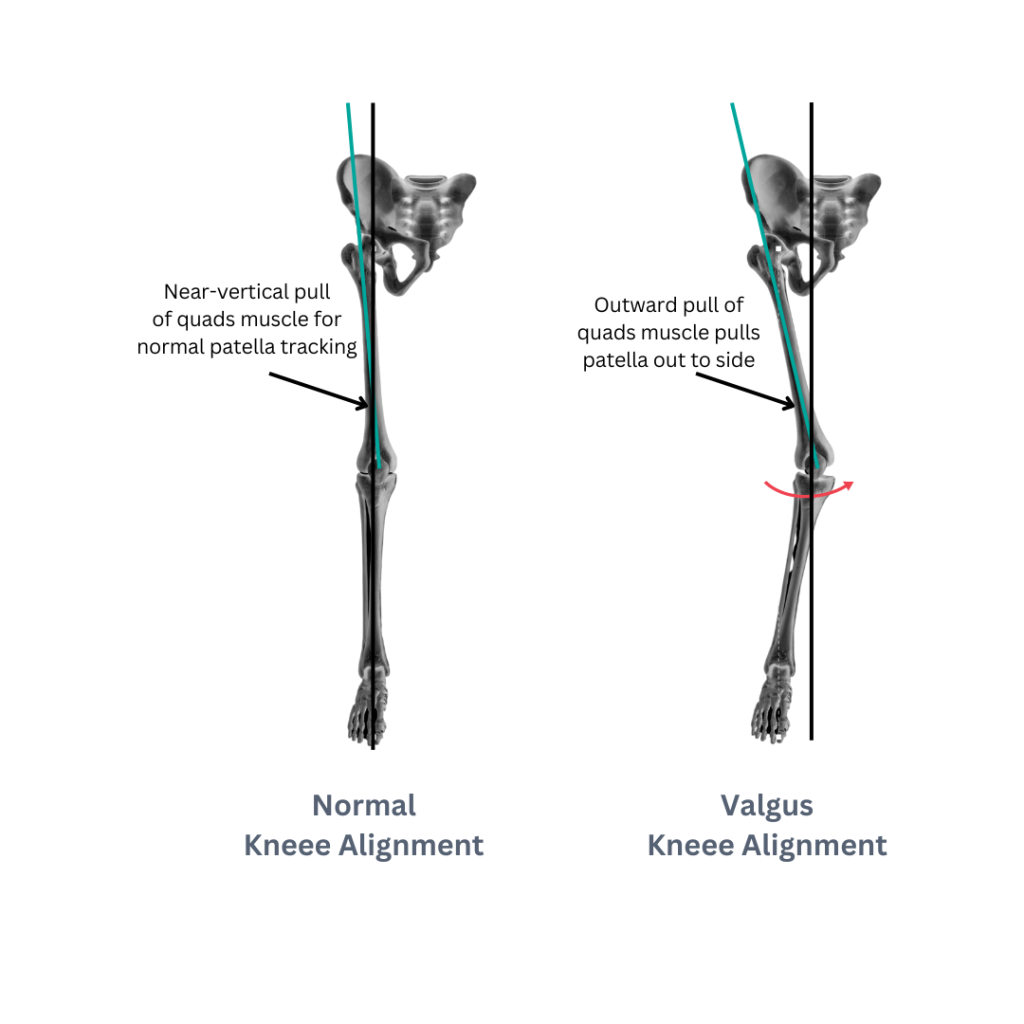
Strength Exercises For Runner’s Knee – Quads, Glutes, Or Both?
Many runners will experience knee pain at some time their running career. One of the most common causes of knee pain in runners of all abilities, from beginners to elite, is patellofemoral pain. It’s so common in runners that it’s often known simply as “runner’s knee”. There are many different treatments available, and strength exercises have been proven to be one of the most effective parts of any rehab program. But which muscles do you need to strengthen, and do you need to do more than one muscle group? Lets take a look.
What Is Runner’s Knee?

The formal name of “runners knee” is patellofemoral pain. The patellofemoral joint is the joint between the patella – our kneecap – and the femur– our thigh bone. The way the patella moves around the end of the femur as we bend and straighten our knee is called patella tracking. This patella tracking is important because when it is working correctly it optimises the contact area between the back of our patella and the end of our femur, meaning that we can absorb the loads compressing through the joint in the best possible way. However, if our patella tracking is out the contact area between the two bones is reduced, so we are not able to absorb the joint loads so well. This increases our risk of getting runner’s knee, i.e. patellofemoral pain. This issue becomes more of a problem as we bend the knee further, because the more bent position our knee is in the more compressive force there is between the two bones.
Where Is Runner’s Knee Pain Felt?
Most people describe the pain in runner’s knee as being felt felt “behind the kneecap”. Sometimes it is more localised to the inner or outer part of the kneecap, but often it’s hard to pin down to a specific small area. This is because the irritated joint surface is on the back part of our kneecap, a fair way underneath our skin, so you can’t really “put your finger on it”. pain at the intra or retro-patellar space which is at the front of our knee around or behind our kneecap. This is aggravated by a compressive force in the area when the knee is bent. This is often seen in running due to the repeated compressive force.
Which Activities Make You Feel Patellofemoral Pain?
Ok, the name “runner’s knee” kind of gives at least one thing away! Yes, running is a common activity that can make you feel patellofemoral pain. The pain tends to be felt more when the knee is bent further, so running up and down hills and stairs is often worse than flat running. Trails and cross-country is also usually worse than running on a flat road or path, because the uneven surface often means we bend our knee more plus we also have to turn and twist a bit more running off-road and this can also increase the pain.
Aside from running, other activities that you will often feel patellofemoral pain with include;
– going up and down stairs and slopes
– squatting or lunging exercises or activities
– hopping or jumping activities
– sustained sitting (this compresses joint
– you might feel sore for a few minutes when you get up in the morning, or after sitting for a while. This may mean the joint is fairly inflamed.
Can Runner’s Knee Pain Lead To Problems In The Future?
Yes, is looks like it can. Research shows that there is likely to be a link between patellofemoral pain (runners knee), and developing osteoarthritis of the joint later in life. The exact nature of the link, and how best to minimise this risk, is still being investigated. However, current evidence indicates that if you get patellofemoral pain earlier in life, you should get it treated to reduce your risk of developing osteoarthritis later in life. So, as well as helping you get back to running as quickly as possible, getting runner’s knee pain treated early is a good idea to avoid problems down the track.
What Is The Most Common Cause Of Runner’s Knee Pain?
Like most things that happen in our bodies, runner’s knee pain can be caused and influenced by several factors. Often there will be several of these factors involved with each runner’s presentation, so sometimes finding a single definite cause of the problem is difficult.
One of the most common causative factors for runner’s developing patellofemoral pain is increasing their running volume or intensity too quickly. Our bodies need time to adapt to the loads that we put through our tissues, so if we increase these loads too fast we overload our tissues and cause an injury. The patellofemoral joint takes a significant amount of compressive force during running, especially when hills or stairs are involved. So, if we increase our running volume or intensity (speed/hills/stairs) too quickly the back surface of our patella is unable to cope with this load, and this can cause patellofemoral pain.
What Else Can Cause Runner’s Knee Pain?
Aside from increasing our running volume or intensity too quickly, other factors that can cause runner’s knee pain can be broadly broken up into two categories; biomechanical factors, and anatomical factors.
Anatomical Factors
These relate to how our body is built – our genetics. For example, a shallow trochlear groove (i.e. the groove at the end of our thigh bone where the back of our patella sits) can affect our patella tracking and increase our risk of getting patellofemoral pain. Anatomical factors like this are something we cannot change, although by improving our biomechanical factors (as below) we can usually successfully counteract their effect.
Biomechanical Factors
Biomechanics relate to the mechanics of how our body moves and how the various joints align during movement. Unlike anatomical factors, we can change and improve biomechanical factors. Rehab will focus on strengthening the muscles of the low back (core), pelvis, hip and knee. Strengthening these muscles can improve your leg’s biomechanics and therefore reduce the compressive forces at the patellofemoral joint.
What Are The Most Common Biomechanical Problems That Cause Runner’s Knee Pain?
There can be a variety of biomechanical problems that can contribute to runner’s knee pain. Sometimes our biomechanics can be altered by things such as previous injury, while at other times there is no specific reason as to why these abnormal movement patterns emerge. Sometimes it’s just habit – they way we naturally have started to run! But a couple of the common biomechanical issues we in clients with runner’s knee are;
1. Patella mal-tracking (in about 50% of cases)
This is where the patella (kneecap) moves outwards (or “laterally”) as you bend and straighten your knee. It can be caused by a variety of things including muscle weakness &/or tightness, and can also be part of the “knee valgus” problem discussed below.
2. Knee Valgus or “Functional Knee Valgus”

This is where the knee rolls inwards too much over the foot. It happens when there is too much adduction and internal rotation at the hip, meaning that the knee collapses inwards while we run, walk and with with other activities like going up and down stairs, or doing lunge and squat exercises. It can change the angle of pull of our quads muscle on our patella and therefore alter our patella tracking. This change in alignment can mean that the patellofemoral joint is less able to absorb the compressive loads on the back of the kneecap during running, leading to runner’s knee pain.
How Can Strength Exercises Help Runner’s Knee?
Quadriceps Strengthening: The quads, the muscles at the front of the thigh, attach directly into the patella (kneecap). They then continue on via the patella tendon to attach to your shin bone (tibia). Research strongly shows that strength training directly reduces compressive force at the patellofemoral joint and improves both pain and functional capacity at the knee. Therefore, exercises to strengthen the quadriceps muscles are one of the key foundations of treatment for runner’s knee.
The mix of quads strength exercises that are used in each case of runner’s knee will vary. What is perfect for one person may actually aggravate another person, or be ineffective in another. This is because the exercises selected should change with things like how irritable (sensitive or severe) the pain is, how long it’s been there, previous injuries or episodes of similar pain, the person’s exercise history and familiarity with quads strength exercises etc… Too little load and we are basically wasting our time because not enough stimulus is given to increase strength, but too much load (too much weight, too much volume, or loading in knee joint angles that are aggravating for that particular person) will stir up the pain and make things worse.
Glutes (Gluteals) Strengthening: your glute muscles make up most of your “butt” muscles. They are among the most important muscles used in stabilising and producing movement at your hip, pelvis and lower spine. Because your lower limb essentially “hangs off” your pelvis, the ability of your glutes to control your hip joint has a big impact on how your whole leg is aligned as you run, walk, squat, lunge and do stairs. In recent years more and more research has shown that glute strength work is a key component of a good patellofemoral pain rehab program. Importantly, the research shows that strengthening BOTH your glutes and your quads produces better outcomes than strengthen the quads alone.
When we think about the biomechanical factors discussed above it makes sense that adding glute strength intro your runner’s knee treatment program is more effective then just quads strengthening. Our glutes work to rotate the thigh bone out and away from the pelvis, and this brings the knee outwards away from that inwards collapse or “knee valgus” (see above). More correctly, it can stop excessive valgus collapse from happening in the first place, meaning that the line of pull of our quads muscles stays almost vertical and so correct patella tracking is more likely to be maintained.
So, increasing the strength of our glute muscles can help avoid excessive knee valgus and reduce compressive forces in the patellofemoral joint, therefore reducing runner’s knee pain. However, we do need to note that the research shows that just strengthening your glutes often doesn’t stop valgus collapse by itself. You then need to work on running gait re-education to fully fix the problem. It’s kind of like even if you have a big increase in glute muscle strength, you then need to train your brain to use the extra strength to improve your running gait. Otherwise, although you now have enough strength available to you, if your movement habit is to roll into valgus collapse then you’ll probably just keep going with this habit because it’s what you’ve been doing for years! But getting the strength in the first place is an important first step, and that’s why glutes strength exercises are an important part of getting rid of patellofemoral pain.
Strength Exercises For Runner’s Knee: Quads AND Glutes Work Better Together
Both quads and glutes strength exercises have been shown to improve runner’s knee pain alone. However, in an extensive systematic research review in 2018 of the evidence around strength exercises for patellofemoral pain treatment, combining the two consistently gave the best results. They are both key components of a treatment program for runner’s knee, so make sure they’re both in your program.
Which Other Strength Exercises Can Help Patellofemoral Pain?
While the quads and glutes are the most important muscles to strengthen for treating runner’s knee, research also shows that increasing the strength of some other muscles can help.
– Hip Flexor Strength: gives up to a 15 % improvement in pain and functional abilities.
– Abdominal/Core Strength Training: lateral trunk and hip/pelvis stability have shown improved results compared to those who did quad strengthening alone.
– Verbal Cueing: although not strengthening, using coaching cues to correct the valgus collapse at the knee has been shown to be effective in some studies. This is relates to the discussion above, where we outlined that just strengthening the glutes is not the whole picture – you then need to train your brain to use the extra strength to improve your running gait and reduce the valgus collapse.
– Stretching: while strength exercises and load management form the foundation for effective treatment of runner’s knee pain, stretching has been shown to be better than no intervention. For some people it may be quite relevant, if they have significant muscle tightness. However, for the vast majority of runners, stretching is not anything like as important as strengthening and load management for beating patellofemoral pain.
Running Performance Benefits AND Injury Prevention
Correcting the valgus collapse not only helps reduce the pain from runner’s knee, it can also make your running more efficient. Improving your glute and quad strength is going to improve your speed and endurance as well as reduce your risk of various other injuries. So, getting stronger can help you run faster for longer with less risk of injury.
Can You Keep Running During Treatment For Runner’s Knee?
Load modification, i.e. adjusting the amount of load placed through your knee (in this case, by adjusting how much running you do), is a key factor in settling and treating patellofemoral pain. Whenever possible we try to keep you doing at least some running, but sometimes you may need to stop for a while to let your pain reduce. Often we can just reduce your running volume or intensity for a while, and sometimes we can tape your knee to allow you to continue at least some running training. Once your pain settles it’s important to gradually return to running a full load again. your running physio will guide you through this process step by step.
Need Help With Runner’s Knee Pain?
If you need help in the treatment of runner’s knee, or any other running-related injury, then the Central Performance Running Centre has everything you need. From running gait assessment to run coaching and strength and conditioning for runners, we love working with runners of all abilities, from beginners to elite. Headed up by Athletics Australia Certified coach Ben Liddy, our team of physios and strength coaches have the extra training and depth of experience runners need to help them run and perform at their best. Click below to contact us with a question, or book online.

